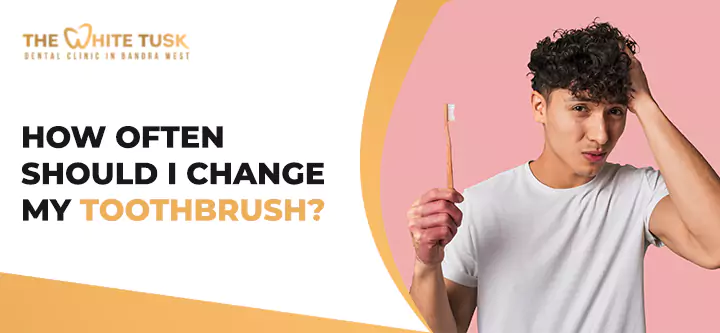
Maintaining good oral hygiene is pivotal for your overall health, and interestingly, the condition of your toothbrush plays a significant role in this hygiene routine. While often overlooked, the toothbrush is your first line of defense against oral bacteria, plaque buildup, and various dental issues. However, just like any other tool, toothbrushes wear out and lose their effectiveness over time, necessitating regular replacement.
But how often should you actually change your toothbrush? This question is more important than it might seem at first glance, as using a toothbrush beyond its prime could compromise your dental care routine. In this blog, we will delve into the recommended guidelines for toothbrush replacement, understanding the signs of wear and the implications of not switching to a new brush in time for optimal oral health.
Maintaining good oral health involves more than just cleaning your teeth on a regular basis; it includes the care and timely replacement of your toothbrush. Changing your toothbrush at appropriate intervals ensures that it effectively cleans your teeth, maintaining your oral health at its peak.
A primary reason for changing your toothbrush regularly is to avoid the buildup of bacteria. Despite thorough rinsing, toothbrushes harbor bacteria and can become a breeding ground for germs over time. Another important reason is bristle wear. Damaged and worn-out bristles lose their effectiveness, failing to clean the teeth and gums properly, and may cause damage to your oral tissues. Lastly, regular replacement can also prevent infections, especially after you’ve been sick, as germs can linger on the toothbrush, potentially leading to re-infection.
Regularly changing your toothbrush plays a crucial role in your overall dental care routine. A fresh toothbrush effectively removes plaque, reducing the risk of gum disease and tooth decay. This practice also ensures that your brushing technique remains effective, reaching all areas without causing harm to your gums or enamel. Thus, incorporating toothbrush replacement into your dental care routine significantly contributes to maintaining oral hygiene.
The most obvious sign is the condition of the bristles. If they’re frayed, splayed, or discolored, it’s time for a new toothbrush. Another indication is the time frame; dental professionals recommend replacing your toothbrush every 3 to 4 months. Additionally, if you or someone in your family has been sick, it’s a good practice to replace all toothbrushes in the household to avoid cross-contamination.
Using an old toothbrush can have several detrimental effects on your oral health. Worn bristles can damage your gums, leading to receding gum lines and increased sensitivity. Furthermore, an ineffective toothbrush won’t remove plaque properly, heightening the risk of cavities and gum disease. Lastly, the continued use of a contaminated toothbrush can introduce new bacteria to your mouth, undermining your oral hygiene efforts. By recognizing these signs and understanding the consequences, replacing your toothbrush can become a pivotal part of your dental care routine, contributing significantly to maintaining a healthy smile.
Recommended frequency for replacing a toothbrush
The American Dental Association (ADA) recommends changing your toothbrush approximately every three to four months. This guideline applies to both manual and electric toothbrush heads, as studies suggest that after about three months of regular use, toothbrushes are less effective at removing plaque from teeth and gums. The bristles become frayed and worn with use, which significantly decreases their cleaning efficiency.
Several factors can influence how frequently you might need to replace your toothbrush, including:
Selecting the right toothbrush goes beyond just picking your favorite color. Consider these key factors:
Selecting the correct type of toothbrush and changing it regularly are simple but crucial steps for maintaining optimal oral hygiene. Always consult with your dental professional if you have specific concerns or needs related to your oral health, as they can provide personalized advice.
Maintaining optimal oral hygiene is crucial for overall health, and a significant part of that involves regular replacement of your toothbrush. Dental professionals universally agree that a toothbrush should be replaced every three to four months or sooner if it shows signs of wear or after illness. This practice helps in removing plaque efficiently and prevents the proliferation of bacteria that can lead to oral diseases. Remember, a fresh toothbrush means a fresh, healthy start to your oral care routine. Making toothbrush replacement a habit ensures that your dental health is always at its best. Keep a spare toothbrush at hand so you’re never left using one past its prime. Taking this simple step can make a big difference in maintaining your oral hygiene.